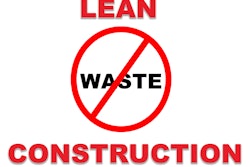
By Elizabeth Heider of Skanska USA and Emma Stewart of Autocase
Construction professionals know the importance of value engineering to keeping projects on budget. But we also know that term has been diluted.
According to Wikipedia, “value engineering is a systematic method to improve the value of goods or products and services by examining the ratio of function to cost.” In short, less expensive materials or services are utilized in projects without sacrificing safety or performance.
But in fact, most general contractors would agree that while value engineering has traditionally been about cost-cutting, this financial savings is sometimes to the detriment of overall project “value.” This is because optimizing isolated parts (for cost or efficiency) often “pessimizes” the whole. Compounding the issue? Doing it so late in design, at the construction stage. At that point, because so many design decisions are already locked in, synergies between systems can’t be capitalized upon, leaving money on the table in an already slim margin industry.
Picture this: An architect specifies dynamic glazing, super-insulating walls and small mechanical systems for a building in a cold climate. Together, these elements can lead to exceptional building functionality in the form of comfort, ventilation and energy costs. In a traditional, lowest-bidder-wins setup, it would not be uncommon for a contractor in value engineering to seek to reduce glazing and insulation because they make the capital costs higher than traditional projects.
But that’s because we’re only looking at a sliver of the design. When we account for the fact that eliminating glazing and insulation in a cold climate will require us to upsize the mechanical systems, we end up with higher capital and operating costs over the building’s lifecycle — money wasted on higher utility expenses for literally decades to come.
But there are three reasons why we’re confident we can make value engineering true to its name again.
- With the rising popularity of design-build “lump sum” or “best value” contracts, contractors have an opportunity to serve as champions for their clients. They can seek out efficiencies between building systems rather than squeeze each system to the detriment of the whole.
- Our experience with value engineering workshops (see SAVE) has given us hope. Having facilitated numerous sessions for clients such as the U.S. Department of State, New York City Office of Management and Budget, and state of Utah, we examined the functionality sought for a project and any mismatches between functions, project goals and the budget. We would then brainstorm opportunities to improve the project, price out those improvements — considering operational costs — and explore synergies between them. The owners could confidentially sit down with their design teams to discuss where additional costs might deliver added value, and which capital cost reductions would likely cost them more money over time. We knew we couldn’t forecast lifecycle costs perfectly, but we at least had a relative idea of which strategies were worth the investment over time.
- Lastly and most importantly, value engineering now has access to a sophisticated new set of economics software tools like Autocase which can, in real-time, determine in dollar terms who benefits and by how much from a given design scenario. By quantifying costs and benefits across the triple bottom line (financial, social and environmental) metrics, these technologies can calculate not only the financial ROI of an incremental dollar spent on items like super-insulating walls and windows in the form of capex and opex, but also the “social” improvement in tenant productivity and health stemming from better thermal comfort. Plus, these programs can determine the “environmental” improvements from factors like avoided local air pollution. Our client experience has shown this to prevent unexpected delays due to NIMBYism, because the local community understands and appreciates why they should support the project in very clear dollar terms.
In light of shifting technologies and customer demands (institutions like the state of California, the city of Los Angeles and the San Francisco International Airport are requesting — or requiring, via RFP language — that companies use analytics to find most value-add solutions), we’re confident that the industry is at a turning point with respect to putting the “value” back in value engineering.
Elizabeth Heider, FAIA, LEED Fellow, is the Chief Sustainability Officer at Skanska USA, serves on the Management Team of Skanska USA and supports Skanska’s four U.S. business units: Building and Civil (construction), Commercial and Infrastructure Development with combined annual revenues of about $7 Billion. She currently serves on the Envision Review Board and has facilitated or participated in over 100 Value Engineering workshops.
Emma Stewart, Ph.D., LEED AP, is a former executive at Autodesk who now runs business development for Autocase, the first-ever software to automate the business case for smarter, greener, healthier buildings and sites. She sits on the Board of the U.S. Green Building Council and teaches the subject of “Intrapreneurship” at UC Berkeley and Stanford University.



















